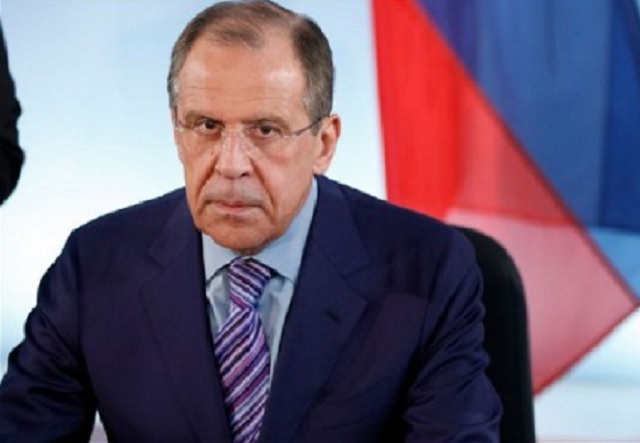Internal devaluation: Who should do what?

Prosper Ndlovu, Business Editor
THERE is consensus that Zimbabwe needs to speedily reform its business environment by coming up with investor friendly policies and regulations that will enhance the ease of doing business and product competitiveness.
While more focus has been put on attracting foreign direct investment (FDI), economic experts have pointed to domestic policy gap and inherent internal loopholes that can only be addressed through a collective stakeholder effort.
Given the firming of the United States dollar, the dominant currency in the country since adoption of the multiple-currency system in 2009, and the influx of cheap imported products some of which come through smuggling, revitalising local industry to compete with regional and international producers has become a daunting task.
Declining capacity utilisation in the manufacturing sector, now at 34,3 percent, according to CZI, closure of companies and resultant job losses, have heightened calls for a bold economic turnaround strategy to avert further collapse.
Diaspora funds, which are an important source of funding, are also affected by the strengthening of the United States dollar where earners are in a non-US dollar-based economy, such as South Africa.
The spending capacity of beneficiaries is reduced where the amount sent home is not increased in line with movement in the exchange rate.
Where local producers sell to the domestic market at prices close to export prices, consumers will tend to spend more on their local economy.
Since Zimbabwe does not have a currency of its own, which it could easily devalue to attain competitive edge and stability, experts say a holistic cost restructuring approach in the form of internal devaluation is the most appropriate response to repositioning the country’s economy.
Internal devaluation is an economic and social policy option to restore international competitiveness of a country through lowering production or wage costs and increasing productivity without reducing value of the exchange rate.
Not much has been said about the concept although studies have shown the approach has worked successfully with lessons from reforms in Central and Eastern Europe in the wake of the global financial crisis in 2008.
A concept note on internal devaluation submitted to Cabinet, a copy shown to Business Chronicle, observes that the application of tariff protection measures to cushion local industry and curb imports alone cannot sustainably achieve the desired economic turnaround given the highly uncertain global economic environment.
As things stand, tariffs will have to be moved each time exchange rates shift in an adverse direction.
Reference has also been made to the weakening of exchange rates due to uncertainty in the performance of the Chinese economy, the largest consumer of commodities.
As the world economy witnesses a decline in the international price of commodities, foreign inflows into the Zimbabwe’s economy, which largely depends on exporting commodities, has been negatively affected.
Exports of manufactured products have progressively lost competitiveness with the strengthening of the US dollar and declined over time hence the observation that the composition of exports has shifted towards unprocessed goods.
The study proposes a combination of increased productivity and a reduction in costs as a viable strategy to enhancing competiveness.
“A holistic internal cost reduction of standard business input costs, namely finance, labour, utilities, property taxes and cost of doing business should be considered. This helps to support both imports and exports,” reads part of the concept note.
“This is a more sustainable approach as it closes the competitiveness gap in costs as experienced by a firm. It reduces the business risk to a firm as it lowers the breakeven point. A cost reduction process will address ground that has been lost by both producers for local consumption and exports. Local prices will be such that imports become less attractive and exports more viable.”
The biggest question is who should do what? This emphasises the collective nature of the approach and how its success is hinged on mutual cooperation between interested parties, the government and the concerned business community.
The government should lead the process of setting up a legal framework to enable the reduction of costs.
Various statutory regulators such as EMA, Zimra and NSSA should reduce their charges with the view of harmonising the multiplicity of regulatory fees.
As key enablers to business growth, local authorities again should reduce property taxes and service charges, which have been blamed for stifling business viability. Ironically some councils have proposed to increase tariffs at a time when everyone is expecting a reduction.
Water, electricity, transport and logistics service providers also need to reduce their charges.
This is critical after studies have shown that Zimbabwe’s power and water costs rank higher in the region despite associated inefficiencies in service delivery.
Competitive pricing of local products is also expected to lessen rampant smuggling, which is extensive in a high tariff protected environment.
One of the recommendations for the government is reduction of public expenditure and reporting on certain standards such as wage cost to Gross Domestic Product, a primary indicator of economic activity in a country, which should be benchmarked against best practice.
It is refreshing to note that the government is already seized with streamlining its costs with a raft of civil service reforms being implemented particularly labour costs, which gobble close to 90 of total revenue inflows.
Some businesses such as Delta, Econet and Innscor have already started streamlining their costs through commodity price and salary cuts.
Unki Mine and Econet Wireless have also engaged their suppliers seeking a 15 percent cut in prices. The governent should do the same too. Reserve Bank of Zimbabwe (RBZ) governor John Mangudya, is also on record calling on businesses to reduce prices.
Experts say a holistic cost reduction process would stimulate production and reduce the competitiveness gap, estimated at about 50 percent.
Given widening trade deficit estimated at $3 billion annually, the business community led by the CZI, admits there is a need to come up with a cost reduction strategy on standard business input costs and the general cost of doing business.
The prevailing cost structure is working against the viability of local firms, CZI president, Busisa Moyo, said.
The industry lobby group has said it would hold a symposium in Harare early next month to tackle the issues of internal devaluation.
Hopes are high that Finance and Economic Development Minister Patrick Chinamasa, who has been briefed about the strategy, would incorporate some of its tenets when he announces the 2016 budget today.
As a dollarized economy, experts say, prices should be based on export competitiveness. They say export parity based prices will help the economy to stabilize as this should increase exports, which is the major source of liquidity.











Comments